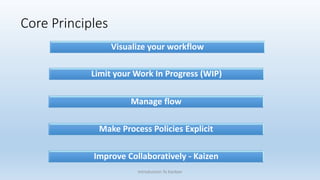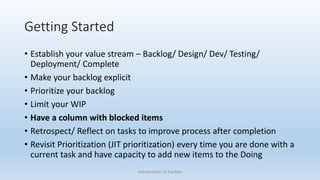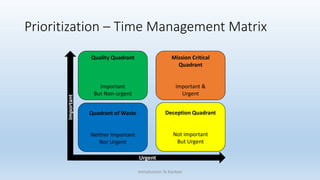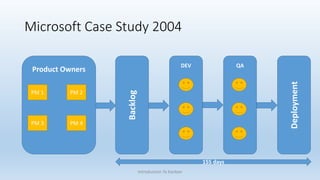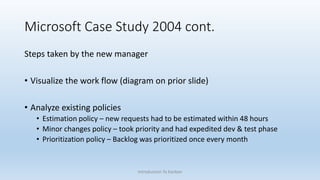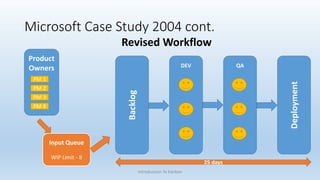The document provides an introduction to Kanban, a process developed by Taiichi Ohno for Toyota's production system, emphasizing its key principles like visualizing workflow, limiting work in progress, and managing flow. It details the benefits of Kanban such as improved quality, reduced wait time, and enhanced teamwork, along with practical applications in software development. A case study from Microsoft showcases significant improvements in lead time and process efficiency after implementing Kanban techniques.



